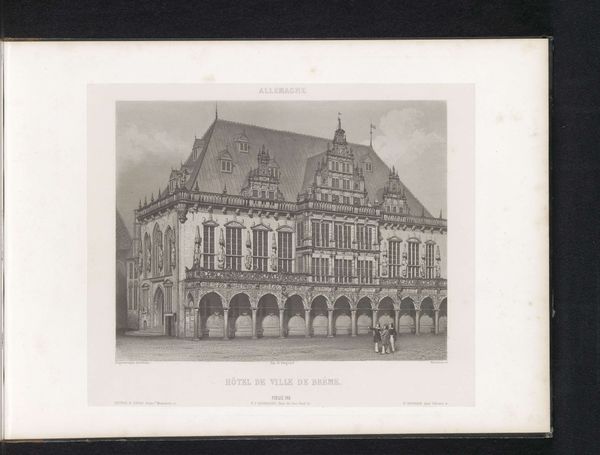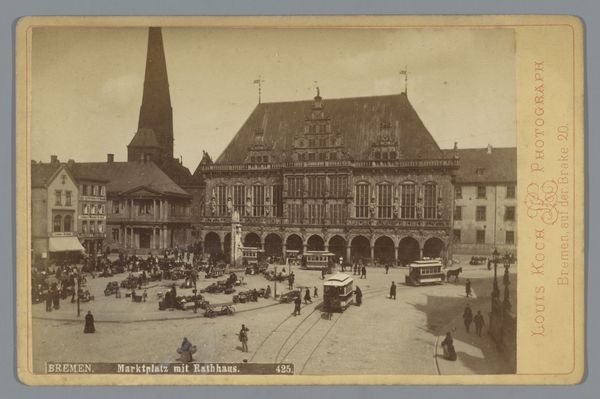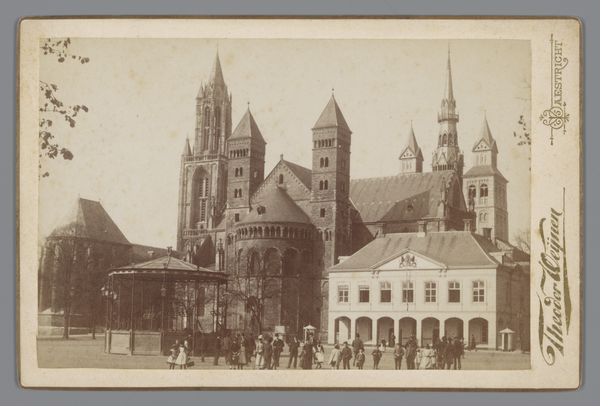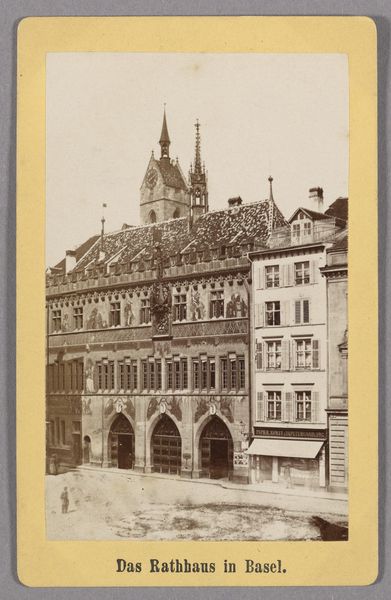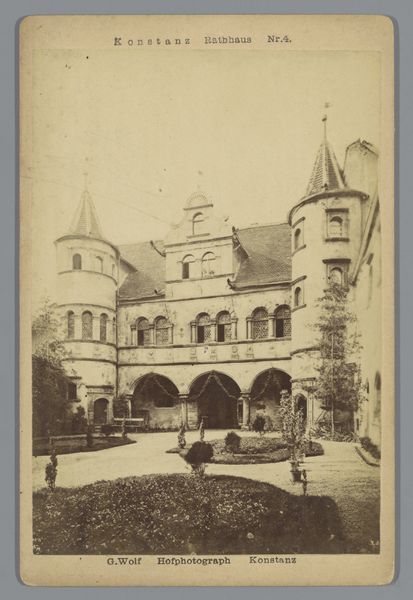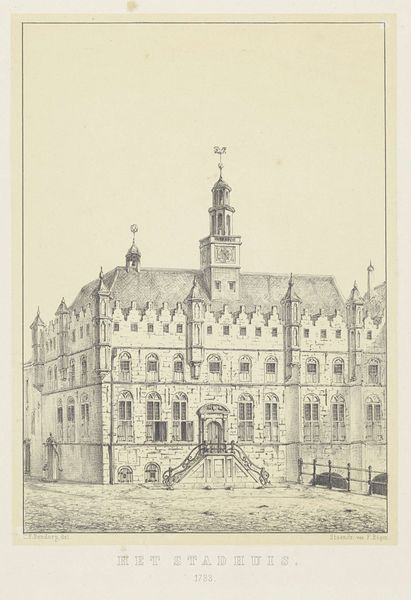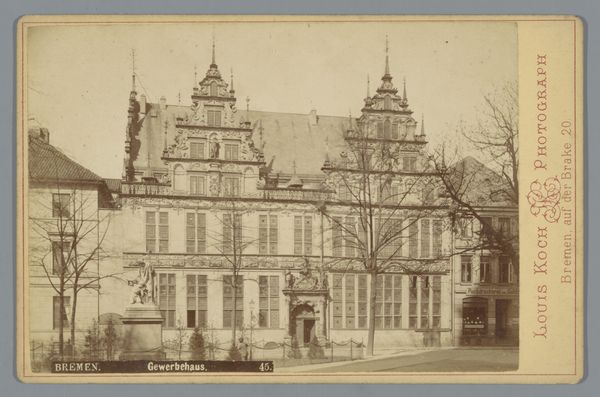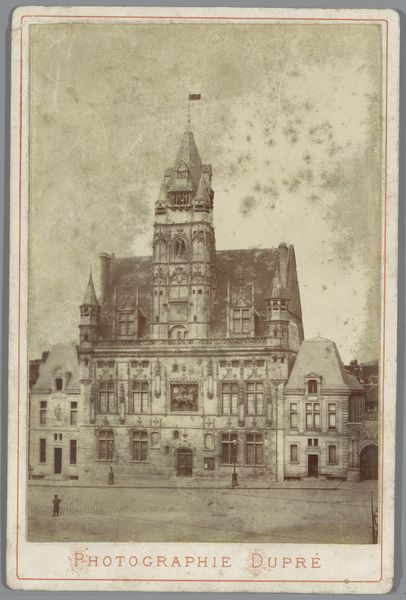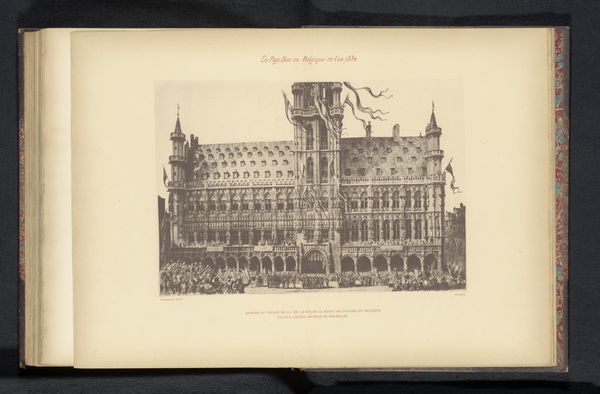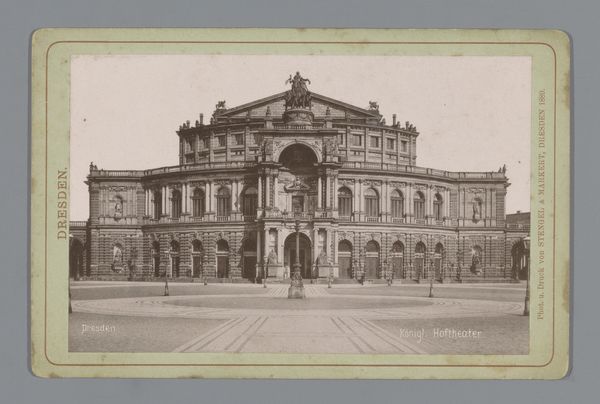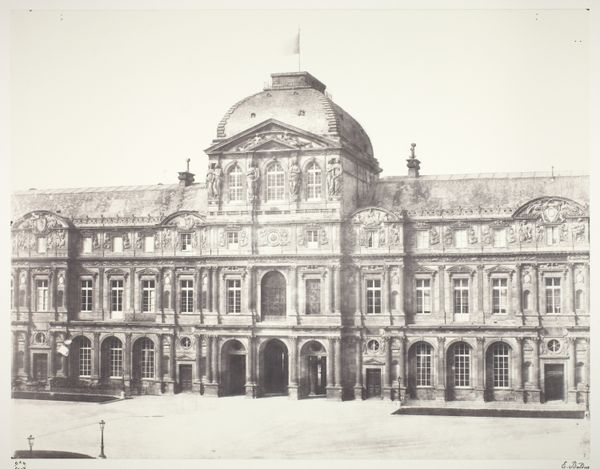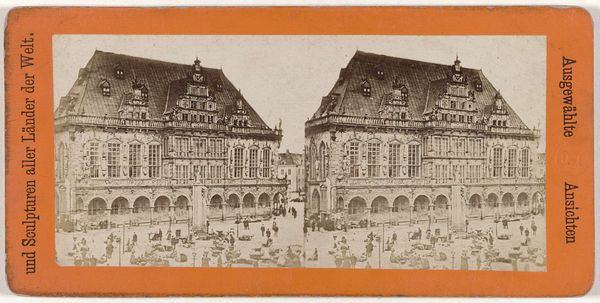
#
aged paper
#
photo restoration
#
historic architecture
#
unrealistic statue
#
old-timey
#
19th century
#
watercolour illustration
#
paper medium
#
watercolor
#
historical font
#
building
Dimensions: height 108 mm, width 166 mm
Copyright: Rijks Museum: Open Domain
Curator: Looking at this sepia-toned image, I'm struck by its density, almost like a miniature city rendered in shades of brown. What am I seeing, exactly? Editor: This is a photograph of the Bremen Rathaus, or Town Hall, captured between 1880 and 1900 by Louis Koch. It showcases the impressive Weser Renaissance architecture. You know, thinking about the albumen print process— Curator: It’s beautiful. Almost overpowering, especially the detailed façade. It makes you consider the political symbolism imbued in such structures and their role in projecting civic power. Do you know who it was initially for, or to whom this artwork was supposed to appeal? Editor: Absolutely! Consider the historical context: The Rathaus was not just a building, but a symbol of Bremen's Hanseatic League power. The photograph itself then serves multiple purposes. It’s documentation of civic architecture but was undoubtedly produced for commercial distribution. These photographs served as accessible representations, available for popular consumption. Curator: Right. The materiality is critical here; an albumen print transforms architecture into a portable, commodifiable image. Think of the labour involved, the chemistry and craft… How does it change the viewing experience? This little card now embodies both high art—architecture—and popular culture. Editor: Precisely. It’s interesting how the photographic medium democratized access, in a sense. People who may never have visited Bremen could possess this image, creating a collective understanding and awareness. It also shapes the grand narrative surrounding the Rathaus itself! Curator: A controlled narrative, though. Someone decides what to show, the perspective, the light... And who is profiting from it? How did this affect Bremen culturally at the time? It must've altered perception. Editor: Undeniably. There’s the selective gaze of the photographer to think of and the influence of photography on shaping urban identity. Curator: Thinking about Koch, this image becomes part of a network. It’s connected to Bremen, its governance, its social fabric. The layers and links are intricate! Editor: Precisely! Seeing through your lens is revealing. It moves this artwork beyond its static nature into its ever-expanding historical implications, and the labor and politics that created this print!
Comments
No comments
Be the first to comment and join the conversation on the ultimate creative platform.

